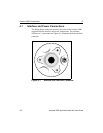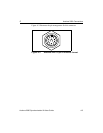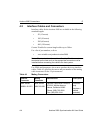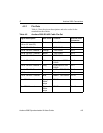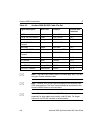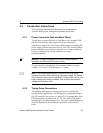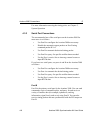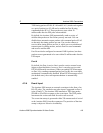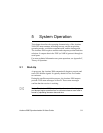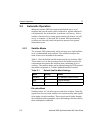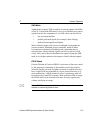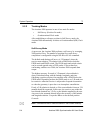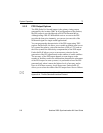
Acutime 2000 Synchronization Kit User Guide 4-9
4 Acutime 2000 Connections
TSIP timing packets 8F-0B, 8F-AB and 8F-AC (which work together
as a pair of packets) or 8F-AD can be enabled on Port B using
command packet 8E-A5. These packets are sent within 30
milliseconds after the PPS pulse when enabled.
By default, the Acutime 2000 automatically sends a variety of
satellite data packets on Port B that you may not need. You can
disable these automatic output packets with command packet 8E-A5
so that only the timing packets are sent. You can also choose to
receive these timing packets on Port A, which serves as a dedicated
transmit port for timing packets, and use Port B to send commands
and receive satellite data.
Port B can also be configured to transmit NMEA packets, but these
packets are not guaranteed to be sent within 30 milliseconds after the
PPS output.
Port A
By default, the Port A receive line is used to receive external event
inputs as described below; however, Port A can also receive serial
RTCM (differential corrections.) When you enable RTCM messages
on Port A (by sending command packets on Port B), the event input
mechanism is automatically disabled. When RTCM messages are off
(the default state), the event input mechanism is automatically
enabled.
4.3.4 Event Input
The Acutime 2000 accepts an external event input in the form of an
RS-422 pulse. The external event pulse input is supported on Port A
(pins #6 and #7). The Acutime 2000 transmits a TSIP time packet
(8Fx0B or 8FxAD) in response to the event input. The TSIP packet
increments the event count field for each event received.
The event time stamp is generated within 320 nanoseconds of arrival
at the Acutime 2000’s interface connector. The precision of the time
stamp is subject to Selective Availability.




